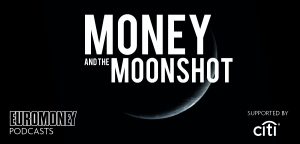Money and the Moonshot

In interview: Japan’s five bank CEOs
4 December, 2019
Australia’s Covid Recovery Gives Banks a Head Start
23 June, 2020Euromoney, June 2020
A new Euromoney podcast series traces the relationship between space and the private sector, from the early Cold War state-funded model of Apollo to one in which venture capital backs the most interesting and visionary ideas.
Listen to the podcasts here
Read the full article here
Euromoney is standing on the Nasa Causeway at Cape Canaveral in Florida, the most storied place in American space history. From here, we have a clear view, not just of the launch pads on the Atlantic shore, but of the radically changed dynamics of space travel that they represent.
If you’re a space geek – and let us assure you, Euromoney is a space geek – launchpad 39A, off to our left, is the one that matters. All the Apollo missions flew from here. Armstrong and Aldrin went to the Moon from here in 1969.
But it’s no longer a Nasa pad: SpaceX signed a 20-year lease over it after winning a bidding contest in 2013.
The other most celebrated launchpads are 36, over to the right, where the Mariner and Pioneer missions were among 145 launches; and 41, where Voyager 1 and 2 departed. This is where our species began to explore our solar system, and beyond.
But Nasa doesn’t run these anymore either. Pad 36 is leased by Jeff Bezos’s Blue Origin, 41 by the United Launch Alliance, a joint venture between Lockheed Martin and Boeing. Today, the private sector is everywhere – and so is private capital.
There is no better place than here to begin to understand a revolution in the relationship between money and moonshots.
Article continues here: https://www.euromoney.com/article/b1m08bbdhjy5gm/money-and-the-moonshot?copyrightInfo=true
